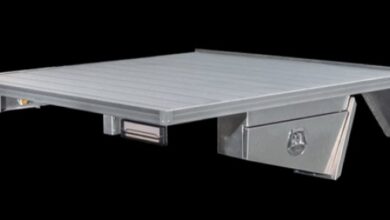Abrasives for Car Paint Preparation: Achieve a Flawless Finish

Preparing a car for painting needs patience and the right tools. Do you want your car’s new paint to look smooth?
The secret lies in proper surface preparation before adding fresh color. Abrasives help remove rust, old paint, and uneven spots easily. Using the right sanding steps ensures better adhesion and a shiny finish.
Each step matters when working on metal or plastic parts. With the right approach, anyone can achieve professional results at home.
Follow these tips to reach that flawless, mirror-like finish. Keep reading to discover more.
Understanding the Role of Abrasives
Abrasives prepare car surfaces by smoothing scratches, dents, or rough paint. They gently remove old layers without harming the base material. This process creates a better surface for primer and paint to stick well.
Choosing the right abrasive grade makes sanding faster and easier. Coarse grits remove thicker paint layers, while finer grits polish the surface.
Knowing grit sizes saves effort and prevents damage to car panels. Proper abrasive selection ensures even results without leaving swirl marks behind.
Extra sanding time on problem spots improves the final look of your paint job. Learning to use abrasives correctly avoids wasting materials and effort.
Professionals always test the surface feel by running a hand gently over it. Smoothness you can feel means your paint will spread evenly without flaws.
Choosing the Right Grit for Each Step
Different grit levels help with specific sanding jobs during preparation. Coarse grits work best to strip heavy paint or rust patches. Medium grits smooth rough primer or body filler areas effectively.
Fine grits make the surface silky before applying fresh coats of paint. Skipping proper grit order may lead to scratches that show later.
Always start coarse and move to finer grits for smoother finishes. Using the right sequence keeps the paint smooth and reduces future touch-ups. Changing grits too soon can leave hidden rough spots under the paint.
Always check the surface after each step under good light for missed areas. It is best to label your sandpaper so you don’t mix grit sizes. Having the right sequence saves hours of extra sanding and frustration.
Types of Abrasives for Car Paint Jobs
Several abrasive types work for car surface preparation before painting begins. Sandpaper sheets are versatile for flat and curved sections alike. Sanding blocks help maintain even pressure on larger flat areas.
Discs fit power tools for faster sanding of tough or large jobs. Specialty abrasives remove stubborn rust or reach tight edges cleanly.
Understanding each tool’s use helps pick the best one for every task. The right abrasive choice makes sanding easier and ensures cleaner paint layers. Foam-backed abrasives work well for curved panels without digging into edges.
Wet sanding sheets reduce dust and leave fewer surface scratches. Using the correct backing pads keeps sanding pressure even across wide areas. Knowing when to use each abrasive saves time and gives a professional-looking finish.
Prepping Surfaces for Best Paint Adhesion
Clean, smooth surfaces help new paint stick properly and last longer. Any leftover dust, grease, or rust prevents even coverage after painting. Always clean the surface with appropriate cleaners before sanding begins.
Sand evenly to avoid ridges that affect how the primer spreads later. A properly sanded surface prevents bubbles or peeling after drying.
Spending extra time on surface preparation saves time and paint costs later. Careful sanding means fewer problems and a stronger paint bond overall. Always rinse off cleaning chemicals fully before letting the surface dry.
Wipe with a tack cloth after sanding to pick up fine dust. Properly taped edges keep sanding neat and reduce uneven lines near trims. Good preparation ensures your paint stays bright, even, and lasts for years.
Essential Tools for Efficient Sanding
Using the right tools makes sanding faster and less tiring. Hand sanders allow precision when working on smaller or detailed spots. Power sanders save effort on large or flat car panels quickly.
Sanding sponges reach curves without scratching the edges too much. Backing pads and sanding discs offer consistent contact with the surface.
Quality sanding blocks reduce uneven sanding or finger pressure marks. With the proper tools, every sanding step becomes simpler and more controlled. Keep spare pads and discs ready to avoid delays during sanding.
Use extension cords safely for electric sanders to work across big spaces. Always keep tools clean to maintain smooth sanding results. Choosing the right tools protects the surface and saves you time and energy.
Safety Tips While Using Abrasives
Sanding creates dust that can harm lungs if inhaled without a mask. Always wear safety glasses to prevent debris from entering your eyes. Gloves protect hands from cuts and rough sandpaper surfaces during work.
Make sure to sand in a well-ventilated place or use fans. Avoid pressing too hard to prevent deep scratches or heat marks.
Replace worn-out sandpaper to keep sanding efficient and clean. Following these safety habits helps protect you and gives better results every time. Tie back long hair and avoid loose clothing near power tools.
Use ear protection when sanding for long periods with machines. Sweep the area often to reduce slipping on collected dust. Practicing safety habits prevents accidents and keeps your workspace neat and organized.
Maintaining Quality Abrasives for Future Use
Storing abrasives properly extends their life and saves money. Keep sandpaper sheets dry to prevent them from curling or tearing. Store sanding discs flat and clean to avoid clogging with dust.
Avoid mixing used abrasives with new ones to keep grit intact. Clean reusable sanding blocks after each job to maintain performance.
Proper care ensures that abrasives stay sharp and ready for the next project. Taking care of tools prevents wasted effort and keeps results consistent. Always inspect your abrasives before use to remove any clogged or dull ones.
Keep them in sealed containers to protect them from humidity. Organize by grit level for easy selection during future projects. Well-maintained abrasives save money by lasting longer and working as efficiently as new ones.
Trusted Source for Abrasive Products
Finding reliable supplies matters for any car painting project. Look for high-quality abrasives to get smoother sanding and better finishes. Kolor Koalition offers a great range of abrasives & sandpaper for autobody needs.
Their products help hobbyists and professionals achieve top-level surface preparation. Having trusted supplies means fewer replacements and steady performance each time.
Quality materials also reduce sanding time and lower the risk of errors. Good abrasives improve results whether for small touch-ups or full car repainting. Reading reviews before buying helps you choose products that work best.
Quality abrasives cut down on waste because they last through the project. Using trusted brands ensures you get consistent results every single time. Picking the right supplier saves both money and effort in the long run.
Avoiding Common Sanding Mistakes
Many beginners press too hard, causing deep scratches on surfaces. Rushing through grit changes often leaves swirl marks that show later. Skipping surface cleaning between steps lets dust scratch the fresh layer.
Using worn-out sandpaper reduces effectiveness and takes more time overall. Forgetting to sand edges can lead to paint peeling later.
Always sand in even strokes for uniform results across panels. Avoiding these simple mistakes saves money, time, and ensures a more polished final finish. Work in good lighting to spot missed areas before painting starts.
Check the panel’s smoothness by touch after each grit step. Replace tools or pads as soon as they show signs of damage. Learning from these mistakes improves your skills and makes future jobs easier.
Finishing Touches for a Smooth Paint Job
Final sanding is crucial before spraying the first primer or paint coat. Use ultra-fine grits to create a perfectly smooth texture on surfaces. Clean every panel carefully to remove leftover sanding dust or debris.
Ensure edges and corners are well-sanded for even paint coverage later. A flawless final prep step reduces the need for extra coats.
Spending extra time here leads to a glossy, professional look afterward. Good finishing habits guarantee your paint stays smooth and lasts longer. Use a microfiber cloth to remove final traces of dust or particles.
Double-check taped areas to prevent paint bleed into unwanted zones. Inspect panels under different light angles to ensure even smoothness. This final care step ensures your hard work pays off with a showroom finish.
Caring for Your Car After Painting
Once your car’s paint is dry, maintenance keeps it looking new. Avoid washing the car with harsh soaps for the first few weeks. Always use soft microfiber cloths to avoid scratching the fresh surface.
Park in shaded spots or use a cover to protect the paint from sunlight. Regular waxing after curing helps keep the surface shiny and sealed.
Avoid parking under trees where sap or falling branches may damage the finish. Quick attention to chips or scratches prevents peeling or rust later.
Using gentle cleaning products preserves your paint’s smoothness for a long time. Schedule regular check-ups for touch-ups if you notice small damage.
Learn About Abrasives for Car Paint Preparation
A flawless car paint finish begins with careful sanding and preparation. Choosing the right grit, tools, and techniques makes the process easier. Safe work habits keep you healthy while protecting your project.
Always invest in quality abrasives to avoid uneven paint or wasted time. Proper surface prep strengthens paint adhesion and creates a lasting shine.
With patience and the right products, any car owner can achieve a professional-level paint job that looks smooth and polished for years.
Did you find this article helpful? If so, check out the rest of our site for more informative content.



